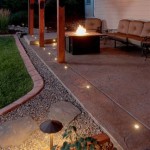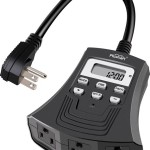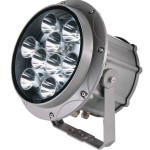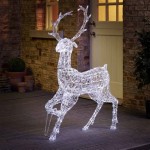How to Turn on Outdoor Lights Automatically
Keeping your outdoor spaces well-lit is not only essential for safety, but it also adds aesthetic appeal to your home. Manually switching on your outdoor lights can be a hassle, but with automation, you can enjoy the convenience of having your lights come on automatically as soon as it gets dark outside. Here's a comprehensive guide on how to turn on outdoor lights automatically:
Choosing the Right Lights
The type of outdoor lights you choose will depend on the specific application and the desired effect. For example, floodlights provide wide-area illumination, while spotlights are better suited for highlighting specific areas. Consider the size, brightness, and color temperature of the lights to ensure they complement your outdoor decor and meet your lighting needs.
Selecting a Control Method
There are several methods available for automating outdoor lighting control. Here are the most common ones:
- Photocell Sensors: Photocells detect changes in natural light levels and trigger the lights to turn on when it gets dark and off when it gets bright.
- Motion Sensors: Motion sensors detect movement and activate the lights when they sense activity. This option is ideal for security lighting or illuminating pathways.
- Timer Switches: Timer switches allow you to set specific times for your outdoor lights to turn on and off, regardless of the natural light levels.
- Smart Home Systems: Smart home systems offer advanced control over outdoor lighting, enabling you to schedule, dim, and control your lights remotely using a mobile app or voice commands.
Installing the Control Device
The installation process for the control device will vary depending on the chosen method. However, some general steps include:
- Locate a suitable mounting location: Choose a spot that provides unobstructed exposure to natural light or motion for sensors.
- Follow the manufacturer's instructions: Refer to the device's manual for specific wiring and installation guidelines.
- Test the functionality: Once installed, test the automation system to ensure it operates correctly.
Adjusting and Customizing
After installation, you may need to adjust the sensitivity or settings of the control device to optimize the lighting performance. For instance, you can adjust the motion sensor's detection range or set the timer switch to specific on/off times. Make necessary adjustments until you are satisfied with the desired automation.
Troubleshooting
If you encounter any issues with your automated outdoor lighting system, here are some troubleshooting tips:
- Check the power supply: Ensure that the lights and control device are properly connected to a power source.
- Test the bulbs: Replace any faulty or burnt-out bulbs.
- Reset the control device: Follow the manufacturer's instructions to reset the control device and reprogram it if necessary.
By following these steps, you can successfully automate your outdoor lights, ensuring they turn on and off automatically based on your preferences. This not only provides convenience but also enhances safety and aesthetics for your outdoor spaces.

3 Remarkably Easy Solutions For An Automatic Porch Light Timer

Turn Your Outdoor Lights On Off Automatically

Heavy Duty Mechanical Outdoor Lighting Timer Volt

Westek Outdoor Light Control Automatically Turns Lights On At Dusk Off Dawn 1pk Com

Westek Outdoor Light Control Automatically Turns Lights On At Dusk Off Dawn 1pk Com

Westek Outdoor Light Control Automatically Turns Lights On At Dusk Off Dawn 1pk Com

The Best Outdoor Light Timer It S A Must Have Home Gadgets Driven By Decor Repair

Westek Outdoor Light Control Automatically Turns Lights On At Dusk Off Dawn 1pk Com

Cubilan Solar Lights Outdoor Stainless Steel Led Landscape Lighting Powered 12 Pack B0872xygyz The Home Depot

Color Changing Solar Lights Outdoor Decorative Auto On Off Garden Temu







